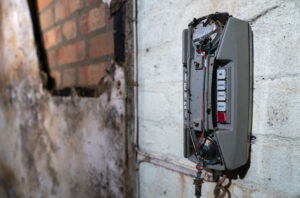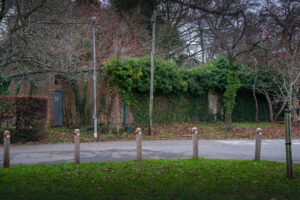Hidden in plain sight: Cardiff’s Cold War bunker receives Grade II listing status

The Llandaff Sub-Control Centre is a single storey, windowless building which is rarely noticed by members of the public — but it once held secrets of Wales’s role in the Cold War.
In recognition of this, Cadw has awarded the unusual building with Grade II listed status —acknowledging the site as a sobering reminder of how close Wales came to nuclear annihilation in the twentieth century.
The Sub-Control Centre building is on the outer edge of the beautiful, terraced gardens of Insole Court — a Victorian mansion which, during the Second World War, was a centre for the emergency services responding to the Cardiff Blitz.
In the years after the war, tensions mounted between the former allies and in 1948 the Civil Defence Corps was revived across the UK — leading Cardiff County Borough Council to make plans for a possible Third World War.
Nuclear weapons had been invented and used by the USA — and in 1949, the Soviet Union produced its first atom bomb, followed by Britain in 1952.
With these developments, tensions continued to rise and during 1953, Cardiff’s city surveyor, EC Roberts, built a Civil Defence Control Centre on Allensbank Road — next to what was once a crucial location for the city’s water supply. He also built two Sub-Control Centres in the east and west of the city, at Cyncoed and Llandaff.
The Llandaff Sub-Control Centre is the only one of these buildings to have survived.
Inside the bunker are the remains of ventilation systems, electricity generators and steel bunk beds in separate rooms for male and female CDC members. The large control centre, message room and liaison officers’ room are linked by messenger hatches and the officers’ room had hidden emergency escape hatches leading outside.
Although sturdy the building is clearly a product of the early Cold War — and could not have hoped to withstand a hydrogen bomb falling on Cardiff.
Preparedness for war was the focus of the CDC but its members responded to other emergencies, including floods and the Aberfan disaster. Even after the CDC was disbanded in 1968, volunteers continued to look after the building and store emergency supplies there until the end of the Cold War in the early 1990s.
Dr Christopher Thomas, Listed Building Officer at Cadw, said: “Since 1945 the nuclear threat has shaped world history — but it has also been an important part of Wales’s past, as evidenced by the Llandaff Sub-control Centre. The building’s existence shows how seriously the people of post-war Wales took this threat, and how they planned to survive it.
“We are so pleased to be able to list this remarkable building, which is now protected as a rare example of civil defence planning — built for a war which was greatly feared but thankfully never came. Plus, it offers a poignant monument to the mostly forgotten volunteers of the Civil Defence Corps in the Cold War.”


















